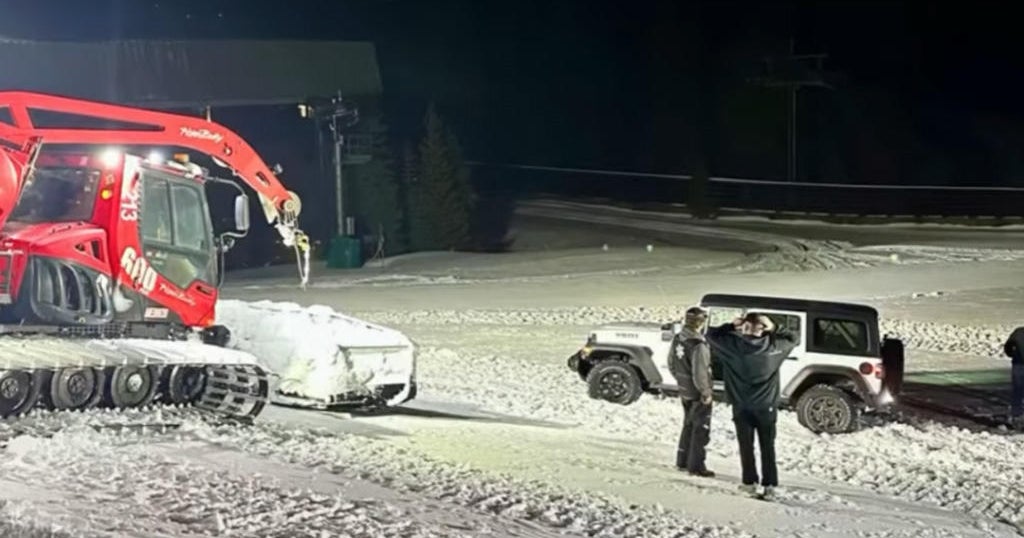Reborn from record winter, Tulare Lake could see explosive growth from snowmelt
TULARE -- Tulare Lake has sprung back to life, its shoreline rapidly expanding from the runoff of a winter of epic rainstorms and the melting of the massive southern Sierra snowpack.
The lake, which has been mostly dry for decades, now covers miles of rich farmland and is threatening to overwhelm nearby communities.
ALSO READ: Rising spring temperatures trigger Sierra snowmelt flood fears; 'We know the heat's coming'
"I was here yesterday with some friends," Doug Snider told KPIX as he looked out across the lake. "I brought my wife today. It was maybe an inch lower. Doesn't sound like much, but that's a lot of surface area. A lot of water."
Snider made his way around a roadblock to see this once-in-a-generation spectacle.
Tulare Lake is back to claim roads, orchards, farms, and anything left behind on that land. It is a disaster unfolding in slow motion, threatening everything around it, including the city of Corcoran.
ALSO READ: Bay Area hazardous sites at risk of flooding as sea level rises; Interactive map
The lake has wrapped itself around the southern and western sides of Corcoran, so the community is now completely dependent on the levees designed to box in and protect this pocket of land. It probably will be for some time to come.
Corcoran is the largest single community threatened by the reborn lake, and that includes the 8,000 inmates in the city's state prison facilities.
Corcoran City Manager Greg Gatzka, who spent years as the county's emergency planning coordinator, knows the city's only protection against the rising waters are decades-old levees.
ALSO READ: Shasta Lake nearly filled to the brim following remarkable winter turnaround
Crews are racing against time and Mother Nature to strengthen those defenses as the cool early spring days edge toward blazing hot summer afternoons.
"Right now, we have the ability to add extra protection on our Corcoran Levee to give us more reassurance that this is going to endure that two-year-long period of water behind it," Gatzka said.
Just south of Corcoran lies California's first town founded by African Americans. Allensorth was built by refugees from the Jim Crow south.
ALSO READ: Remote Northern California reservoir stuck in drought despite winter's water wealth
"This was a lake. It was a big bowl," said lifelong Allensworth resident Kayode Kadara of Tulare Lake. "Allensworth happens to be on the shoreline of the lake."
Kadara spends his days leading the community through its latest crisis from a makeshift emergency command center.
"Straight out there, you see equipment. They're still doing some repair work," he said. "A portion of the levee was breached intentionally. Some farmers did not want water to go on their farm. So they, in the middle of the night, took equipment out there and damaged a portion of the levee, which then forced water to start heading in our direction."
They stopped that flooding with a series of improvised levee repairs. Now they're waiting on the snowpack looming over the valley floor.
"Our hope that everything stays contained in the channels," Kadara said.
Levee repairs are just part of the emergency work going in every direction. Los Angeles County is racing to seal up its sewage-to-compost facility. PG&E is using fan boats and divers to pull their equipment out of the water. And California High Speed Rail, with at least one portion of their project currently submerged, is now lending assistance and equipment to the flood response.
But the biggest open question now is where the runoff will be directed.
"We have to rely on the farming interests outside of our levee to actually divert that water, put it to agricultural production use, put it in basins, and actually pump it out to other areas," Gatzka said. "So we're really dependent upon our agricultural neighbors."
So another concern is transparency about who is making the call on what land gets flooded. That was Kadara's personal request of Governor Gavin Newsom.
"The core part is establishing that one organization that now can lead all of like this," Kadara said of his request for state oversight. He and others want to know who's making decisions about where the water is going to go.
"Oh yeah. Absolutely," he said. "So it isn't the large farmers."
Snider actually saw the lake reform in 1969. It will be here for at least another year or two. How much damage is caused will depend on high-stakes decisions about where the water will flow, and how the weather unpacks that historic southern snowpack onto a lakebed once thought to be extinct.
"Yeah. I was amazed then," Snider said of previous floods. "And we've always come out every time he gets high. But I've never seen it, since then, this high. It's foreboding."





